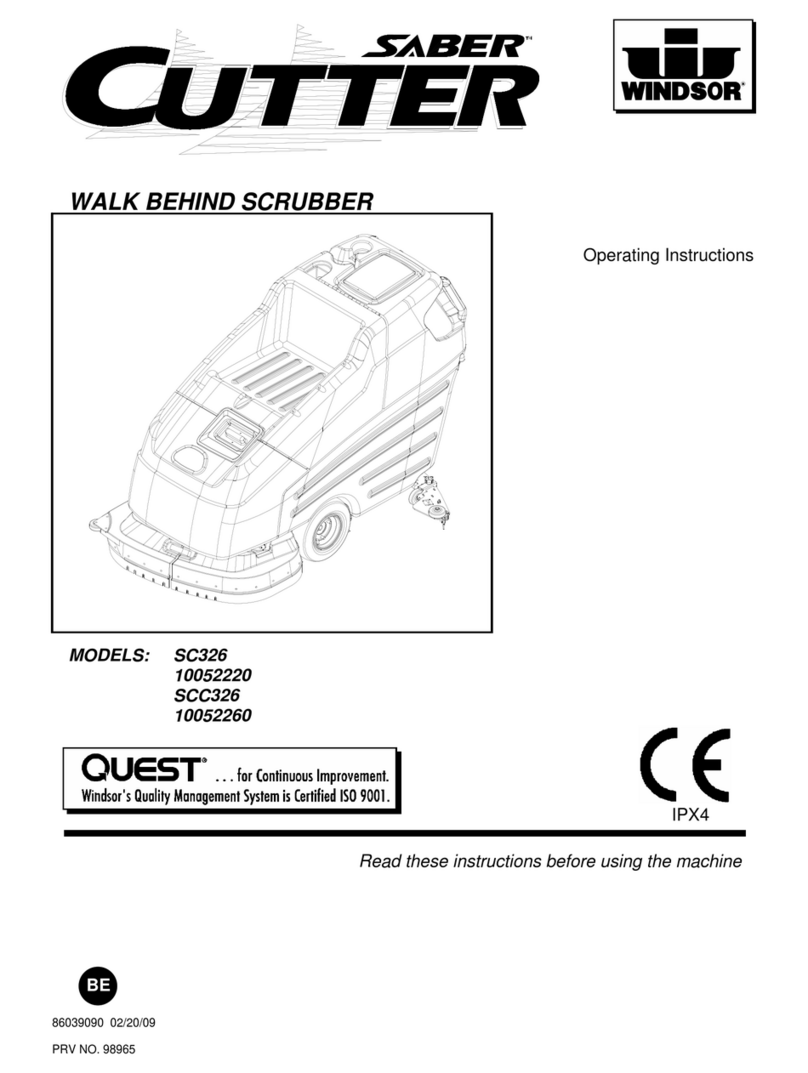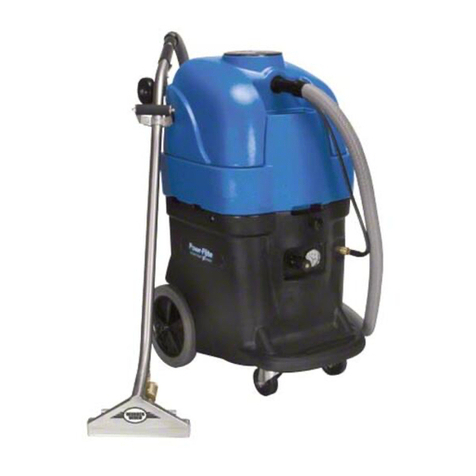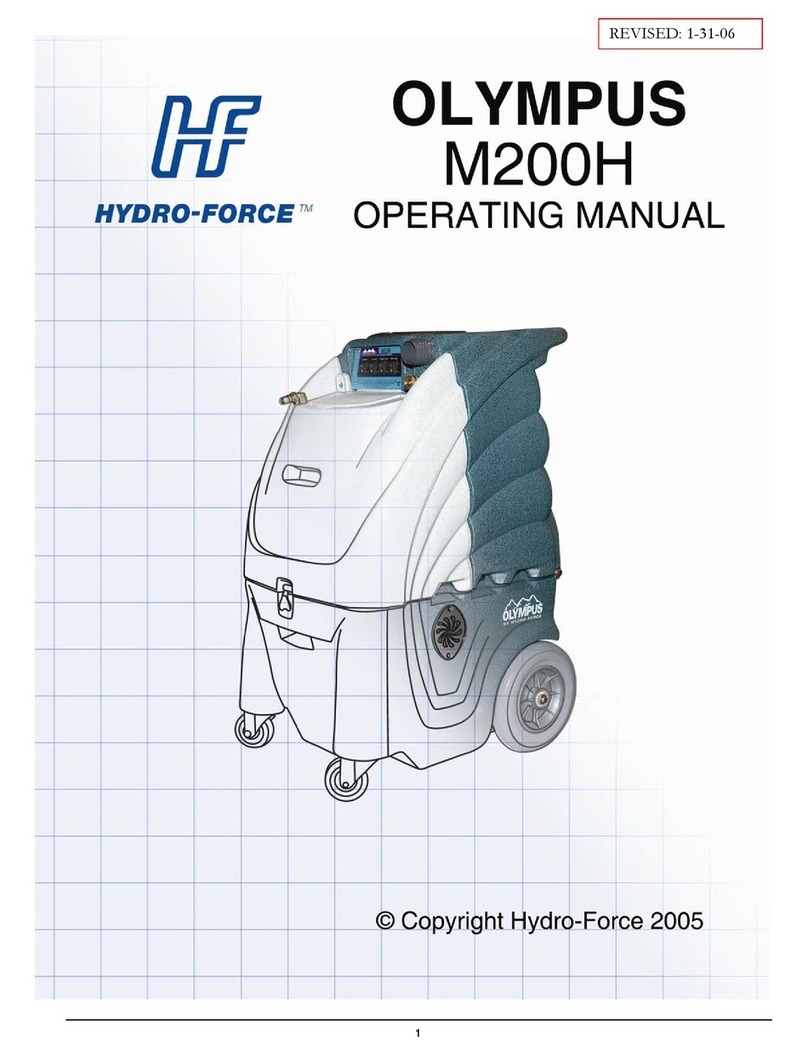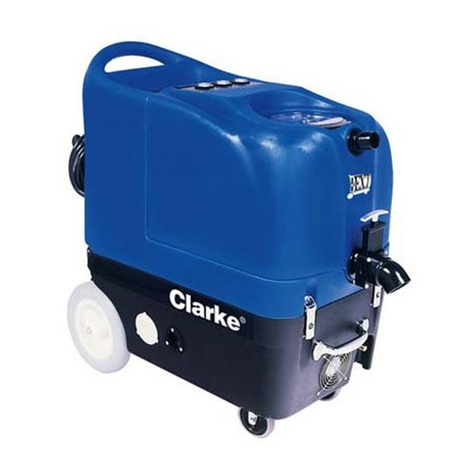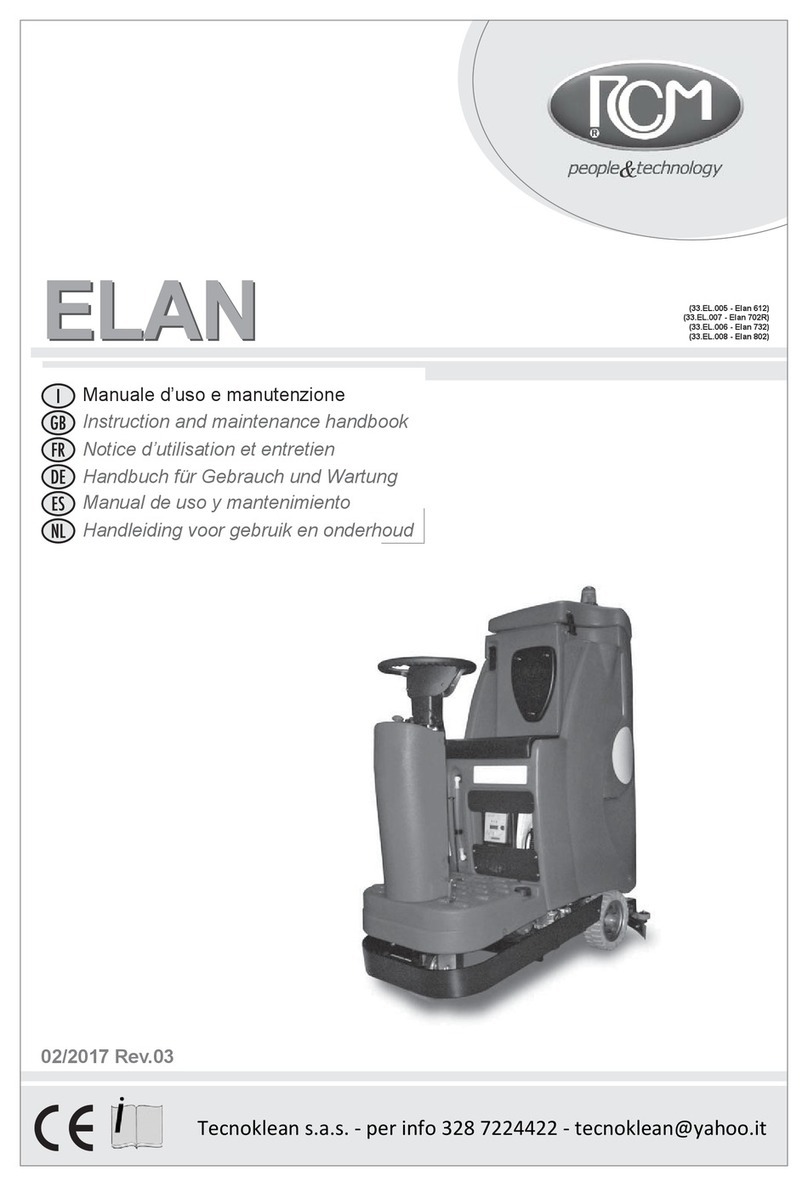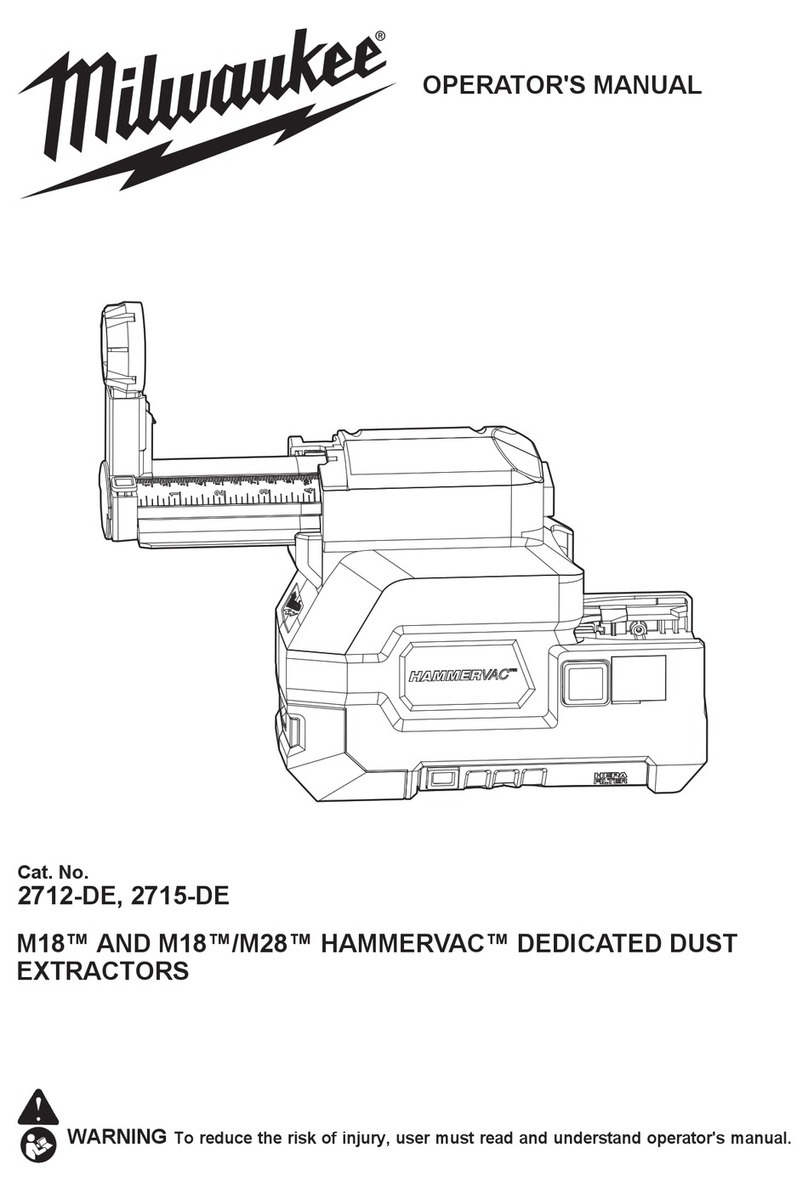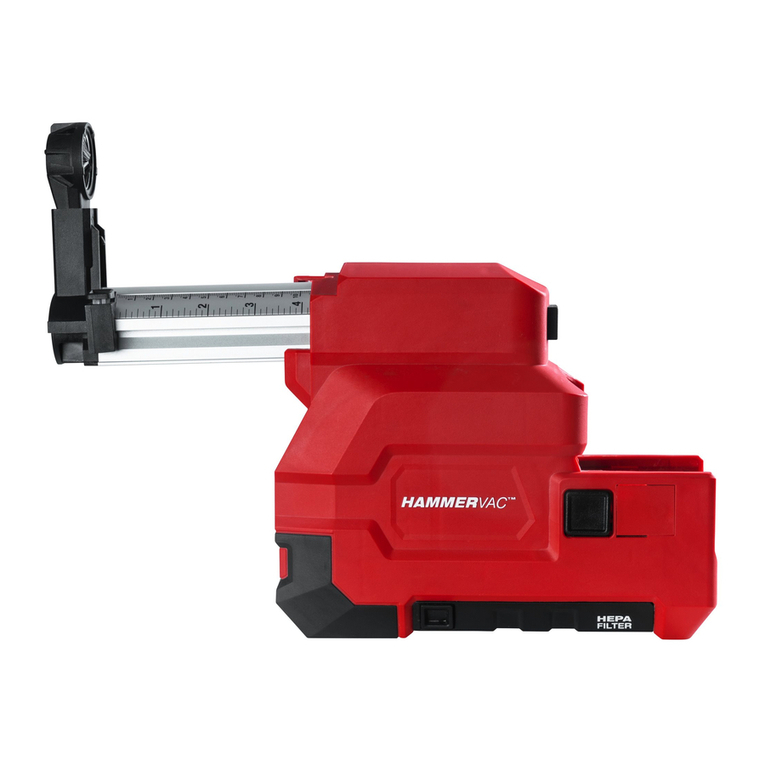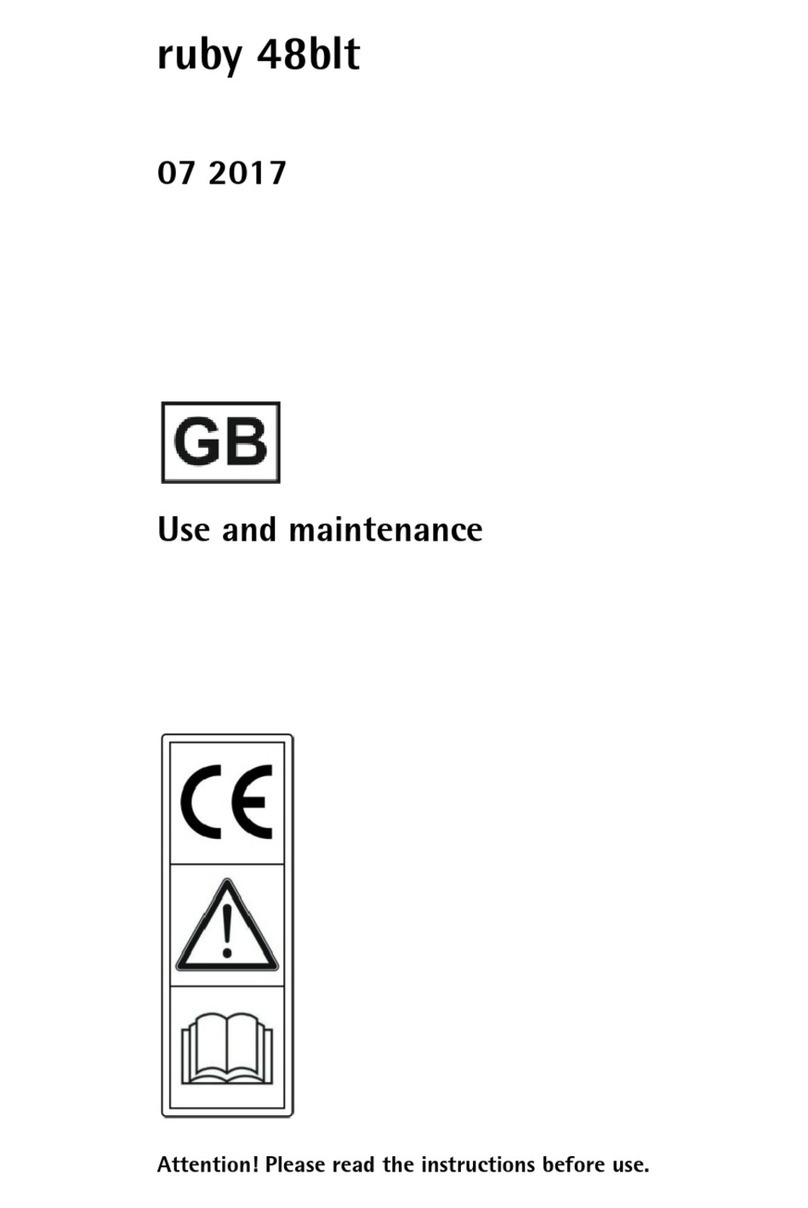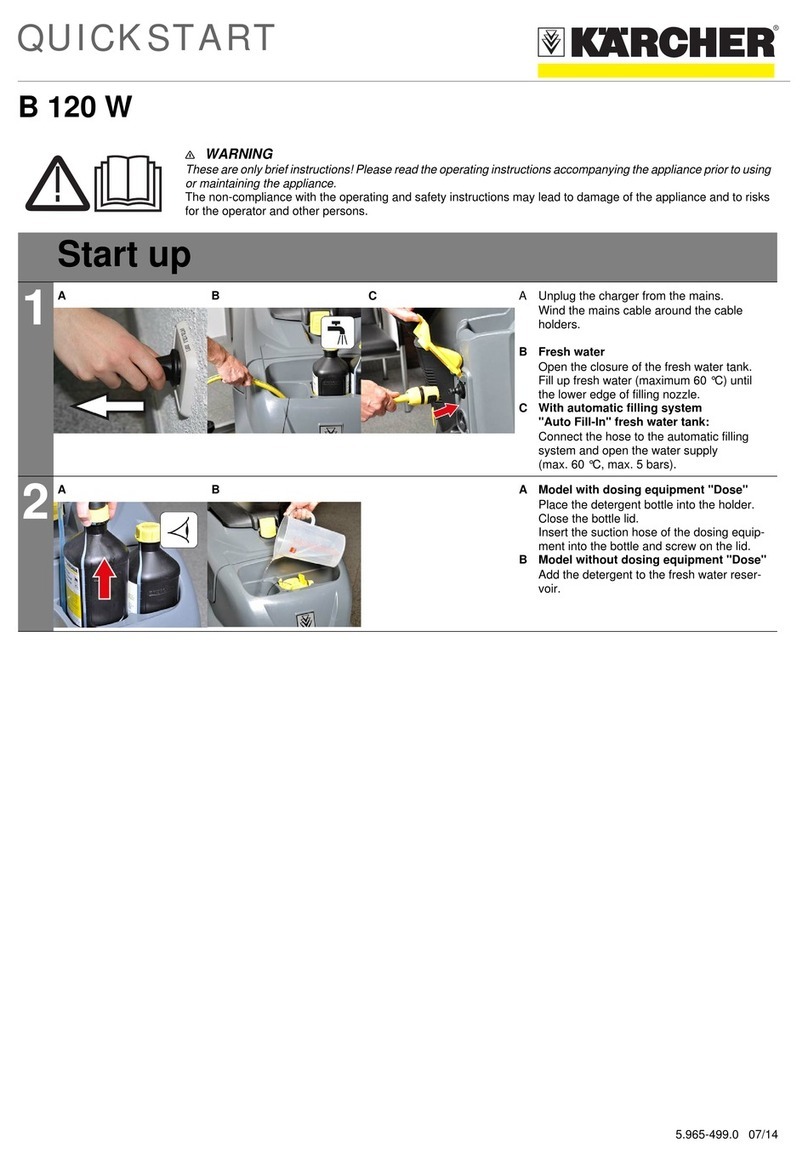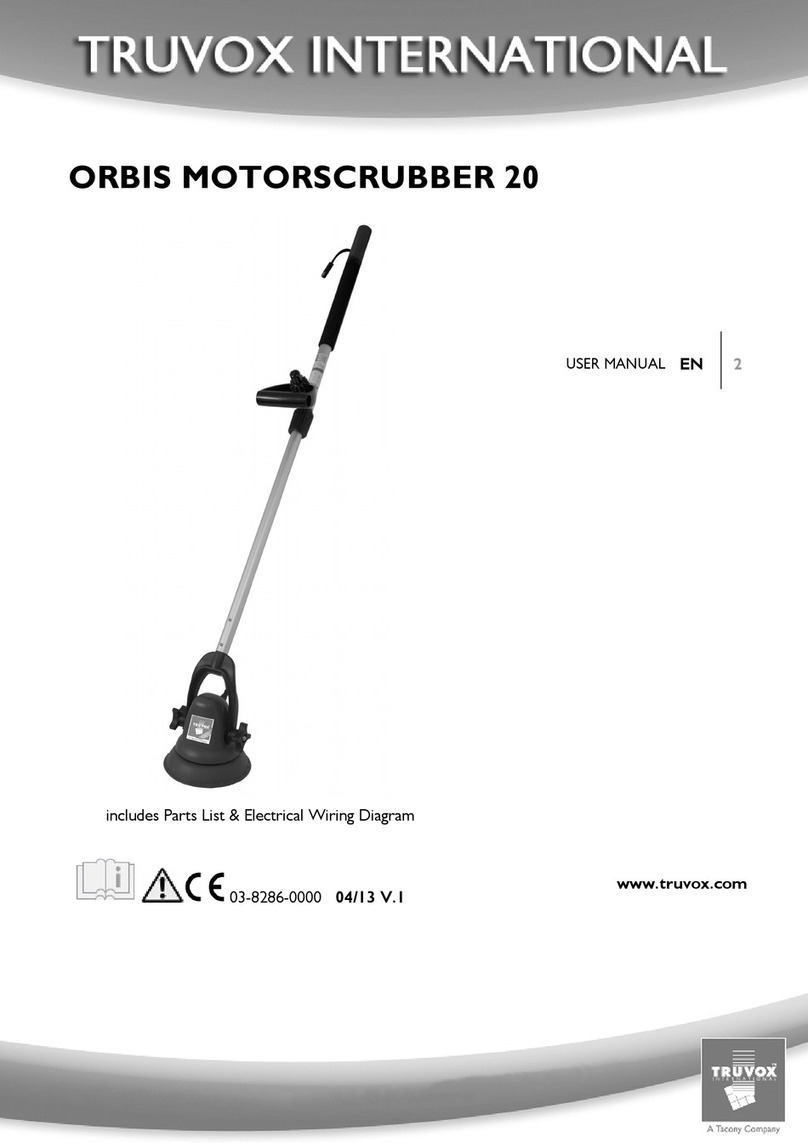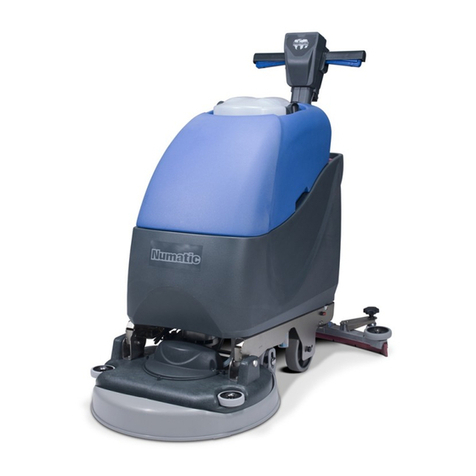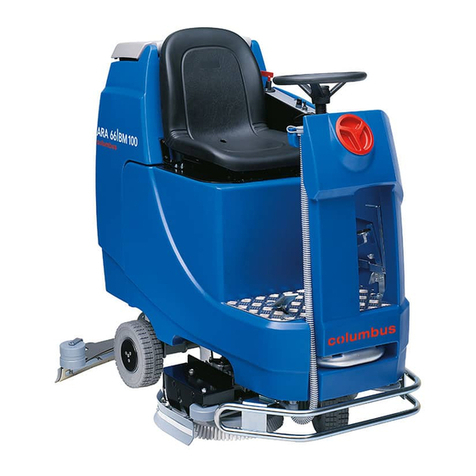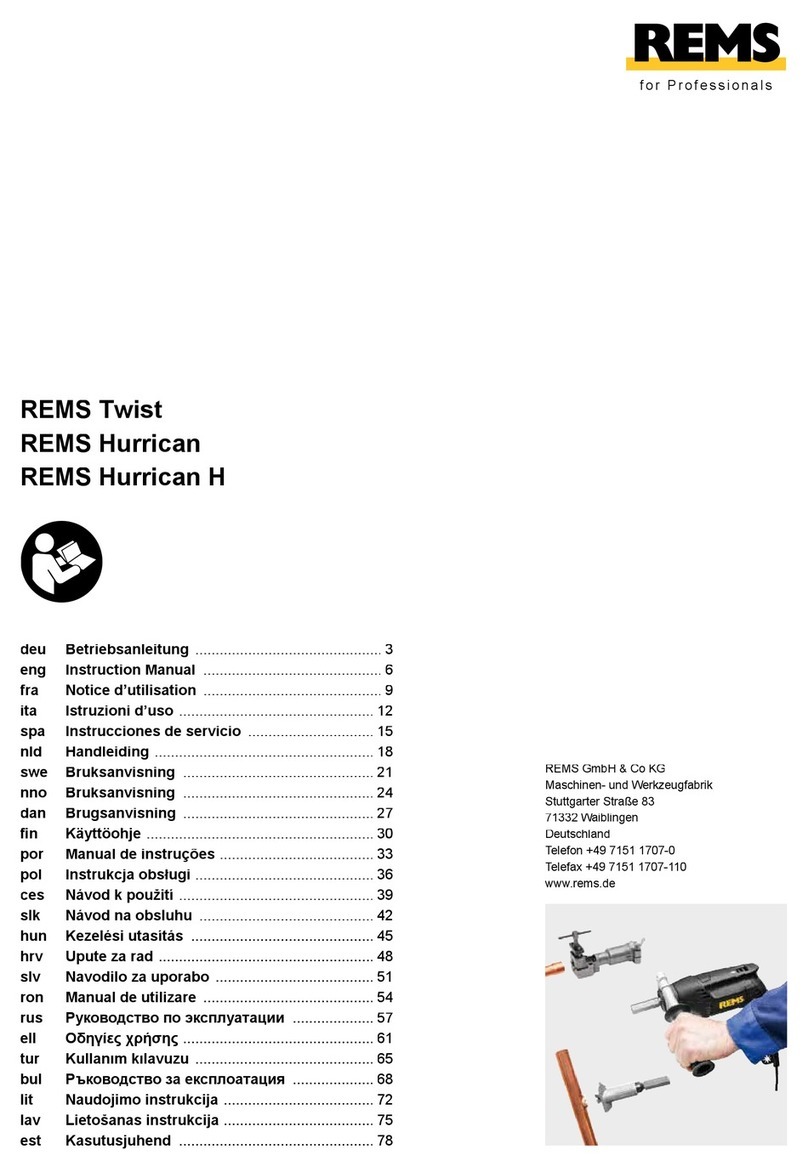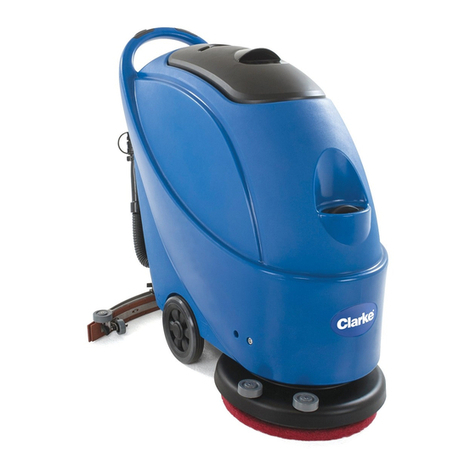
7
LIMITED WARRANTY
USA & CANADA
Every MILWAUKEE power tool* (see exceptions below) is warranted
to the original purchaser only to be free from defects in material and
workmanship. Subject to certain exceptions, MILWAUKEE will repair
or replace any part on an electric power tool which, after examination,
is determined by MILWAUKEE to be defective in material or workman-
ship for a period of ve (5) years** after the date of purchase unless
otherwise noted. Return of the power tool to a MILWAUKEE factory
Service Center location or MILWAUKEE Authorized Service Station,
freight prepaid and insured, is required. Acopy of the proof of purchase
should be included with the return product. This warranty does not
apply to damage that MILWAUKEE determines to be from repairs
made or attempted by anyone other than MILWAUKEE authorized
personnel, misuse, alterations, abuse, normal wear and tear, lack of
maintenance, or accidents.
Normal Wear: Many power tools need periodic parts replacement and
service to achieve best performance. This warranty does not cover
repair when normal use has exhausted the life of a part including,
but not limited to, chucks, brushes, cords, saw shoes, blade clamps,
o-rings, seals, bumpers, driver blades, pistons, strikers, lifters, and
bumper cover washers.
*This warranty does not cover Air Nailers & Staplers; Airless Paint
Sprayer; Cordless Battery Packs; Gasoline Driven Portable Power
Generators; Hand Tools; Hoist – Electric, Lever & Hand Chain;
M12™ Heated Gear; Reconditioned Product; and Test & Measure-
ment Products. There are separate and distinct warranties available
for these products.
**The warranty period for Job Site Radios, M12™ Power Port, M18™
Power Source, Jobsite Fan and Trade Titan™ Industrial Work Carts
is one (1) year from the date of purchase. The warranty period for
the
M18 FUEL™ 1" D-Handle High Torque Impact Wrenches, Drain
Cleaning Cables, AIRSNAKE™ Drain Cleaning Air Gun Accessories,
and REDLITHIUM™ USB Laser Levels is two (2) years from the date
of purchase. The warranty period for the M18™ Compact Heat Gun,
8 Gallon Dust Extractor, M18™ Framing Nailers, M18 FUEL™ 1/2"
Ext. Anvil Controlled Torque Impact Wrench w/ ONE-KEY™, M18
FUEL™ 1" High Torque Impact Wrench w/ ONE-KEY™, M18 FUEL™
2 Gal. Compact Quiet Compressor, M12™ Laser Levels, 165' Laser
Detector, M12™ 23GA Pin Nailer, and M18 FUEL™ 1/4" Blind Rivet
Tool w/ ONE-KEY™ is three (3) years from the date of purchase.
The warranty period for the LED in the LED Work Light and the LED
Upgrade Bulb for the Work Light is the lifetime of the product subject
to the limitations above. If during normal use the LED or LED Bulb
fails, the part will be replaced free of charge.
Warranty Registration is not necessary to obtain the applicable war-
ranty on a MILWAUKEE power tool product. The manufacturing date
of the product will be used to determine the warranty period if no proof
of purchase is provided at the time warranty service is requested.
ACCEPTANCE OF THE EXCLUSIVE REPAIR AND REPLACEMENT
REMEDIES DESCRIBED HEREIN IS A CONDITION OF THE CON-
TRACT FOR THE PURCHASE OF EVERY MILWAUKEE PRODUCT.
IF YOU DO NOT AGREE TO THIS CONDITION, YOU SHOULD NOT
PURCHASE THE PRODUCT. IN NO EVENT SHALLMILWAUKEE BE
LIABLE FOR ANY INCIDENTAL, SPECIAL, CONSEQUENTIAL OR
PUNITIVE DAMAGES, OR FOR ANY COSTS, ATTORNEY FEES,
EXPENSES, LOSSES OR DELAYS ALLEGED TO BE AS A CON-
SEQUENCE OF ANY DAMAGE TO, FAILURE OF, OR DEFECT IN
ANY PRODUCT INCLUDING, BUT NOT LIMITED TO, ANY CLAIMS
FOR LOSS OF PROFITS. SOME STATES DO NOT ALLOW THE EX-
CLUSION OR LIMITATION OF INCIDENTAL OR CONSEQUENTIAL
DAMAGES, SO THEABOVE LIMITATION OR EXCLUSION MAY NOT
APPLY TO YOU. THIS WARRANTY IS EXCLUSIVE AND IN LIEU
OF ALL OTHER EXPRESS WARRANTIES, WRITTEN OR ORAL.
TO THE EXTENT PERMITTED BY LAW, MILWAUKEE DISCLAIMS
ANY IMPLIED WARRANTIES, INCLUDING WITHOUT LIMITATION
ANY IMPLIED WARRANTY OF MERCHANTABILITY OR FITNESS
FOR A PARTICULAR USE OR PURPOSE; TO THE EXTENT SUCH
DISCLAIMER IS NOT PERMITTED BY LAW, SUCH IMPLIED WAR-
RANTIES ARE LIMITED TO THE DURATION OF THE APPLICABLE
EXPRESS WARRANTY AS DESCRIBED ABOVE. SOME STATES
DO NOT ALLOW LIMITATIONS ON HOW LONG AN IMPLIED WAR-
RANTY LASTS, SO THE ABOVE LIMITATION MAY NOT APPLY TO
YOU, THIS WARRANTY GIVES YOU SPECIFIC LEGAL RIGHTS,
AND YOU MAY ALSO HAVE OTHER RIGHTS WHICH VARY FROM
STATE TO STATE.
This warranty applies to product sold in the U.S.A. and Canada only.
Please consult the ‘Service Center Search’ in the Parts & Service sec-
tion of MILWAUKEE’s website www.milwaukeetool.com or call 1.800.
SAWDUST (1.800.729.3878) to locate your nearest service facility for
warranty and non-warranty service on a Milwaukee electric power tool.
RÈGLES
GÉNÉRALES DE
SÉCURITÉ
LORSQUE VOUS UTILISEZ UN
DÉPOUSSIÉREUR ÉLECTRIQUE,
VOUS DEVEZ SUIVRE CES PRÉCAU-
TIONS DE BASE: VEUILLEZ LIRE
TOUTES LES INSTRUCTIONS AVANT
D'UTILISER LE DÉPOUSSIÉREUR.
AVANT D'UTILISER LE DÉPOUSSIÉ-
REUR, VEUILLEZ LIRE LE MANUEL
DE L'UTILISATEUR, LES MANUELS
DE L'OUTIL, DE LA BATTERIE ET
DE SON CHARGEUR, AINSI QUE
TOUTES LES ÉTIQUETTES SUR LE
DÉPOUSSIÉREUR, LA BATTERIE, SON
CHARGEUR ET L'OUTIL. NE PAS SUIV-
RE L’ENSEMBLE DES AVERTISSE-
MENTS ET INSTRUCTIONS PEUT
ENTRAÎNER UN CHOC ÉLECTRIQUE,
UN INCENDIE ET/OU DES BLESSURES
GRAVES.
SÉCURITÉ DU LIEU DE TRAVAIL
• Veillez à ce que l’aire de travail soit propre et
bien éclairée. Le désordre et le manque de lumière
favorisent les accidents.
•Les dépoussiéreurs ont des moteurs et autres
pièces pouvant produire des étincelles durant
leur fonctionnement normal. Veuillez conserver
une distance de 10 mètres avec les zones pouvant
contenir des matières explosives (tels que des
pompes à essence et des endroits où des produits
comme du diluant à peinture, des produits nettoy-
ants, des solvants, etc. sont stockés).
•Ne pas utiliser en présence de poussières, liq-
uides ou vapeurs explosives.
•Ne pas utiliser là où de l'oxygène ou des anes-
thésiants sont utilisés.
•Interdire son utilisation comme un jouet. Portez
une attention particulière lorsque l'appareil est utilisé
par ou proche d'enfants.
•Manipuler l'appareil avec soin lorsque vous
l'utilisez dans les escaliers.
SÉCURITÉ ÉLECTRIQUE
•N'aspirez pas de matériaux humides. N'utilisez
pas d'eau pour contenir la poussière.
•Ne pas manipuler la batterie ou le dépoussiéreur
avec les mains mouillées.
• Ne pas exposer les outils électriques à l'eau ou
l'humidité. La pénétration d’eau dans ces outils
accroît le risque de choc électrique.
